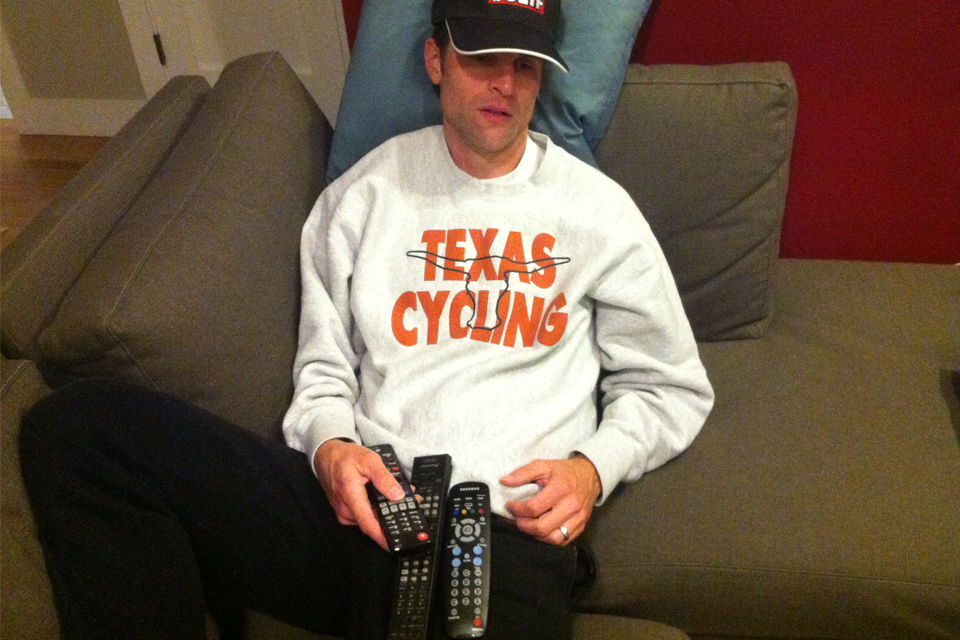Repelling the Couch Magnet

“I don’t want to hear about creativity and finding other ways to move. Running is my life. It embodies everything I love. I’ve tried cycling and swimming. Nothing makes me feel as good as running. I’m not interested in taking a class and learning something new. I’m just pissed and angry,” declared a client during our first meeting.
Fair enough. I get it.
I’ve been there, too. Your runner’s high, the rush of carving graceful turns on your favorite slope, or being the lynchpin of your team on game day can never be replaced. Alas, sometimes injury leaves us stranded with no choice but to find another form of movement and reward. Either because of trauma or chronic wear and tear, you’re facing the reality of retiring from your current sport along with losing your social network and a piece of your soul.
You can’t exercise the way you want, so your motivation evaporates. You know how to follow a training program, but all the discipline you can muster isn’t enough to overcome feeling lost, resentful, and unsettled in the face of a new activity that you’re frankly not good at (yet). The couch has a magnetic hold on you like never before.

Does finding motivation while bidding the sport you love farewell seem like an oxymoron? I won’t promise it’s easy, but it is possible. In this blog, you’ll learn how to stay motivated through: experiencing and internalizing the initial wave of emotions, trying and learning new activities, and uncovering new horizons.
Step 1: The emotional gauntlet
What to expect:
Perhaps you’ve been running for most of your life. Running fed your soul, your social network, and became your outlet for processing stress. Since it’s your life, retirement due to injury makes you feel like part of you is dying.
Closing one chapter of your life warrants a period of grieving. Denial, anger, resentment, and depression may become your new companions. They can appear in any order at any time—not the best surprise I can think of! The emotional rollercoaster you’ve found yourself on is completely normal. Don’t fight it or jump off the ride before it runs its course.
I can tell you from experience that running from intense emotions is a long and circular road. Remember: The only way out is through. Before you can move on to Step 2, you need to experience Step 1.
What to do:
1) Be as kind and as patient to yourself as you would be to the person you care about most while you travel through Step 1.
2) Not judging your feelings is the best way to be nice to yourself. Instead, be an observer of your feelings. For example, if you’re angry, say to yourself, “I’m feeling angry, and that’s okay.” Don’t judge or try to dismiss your feelings. Just observe and learn.
3) You are not allowed to berate yourself. If you aren’t careful, your self-flagellating thoughts will become your truth. If you fall into self-criticism, set a timer for 5 minutes and write down every reason why you are a good person. Awkward? Yes, but it’s effective to reign in your mind.
4) While grief is normal, if you wallow for too long, you risk mental and physical implosion. You have to decide when enough is enough. If you are unable to move on from Step 1 because of an anger or sadness barrier, choose a date and make a promise to yourself—either you legitimately move on to Step 2 by the chosen date, or you seek professional help. I suggest sharing the date with a trusted friend for accountability’s sake. If you don’t want to tell someone, hang a calendar on your fridge and circle a date so it reminds you every morning when you get your Cheerios. This is serious business; hold yourself accountable and do something to remove your mental blocks every day. Every day is a day to try.
Step 2: Finding new ways to move
There are lots of mental exercises you can focus your energies on, but here we’re going to talk about finding different physical movements that provide the psychological reward you’re used to, but are friendly to your body.
What to expect:
If your last sport was dear to you, you were probably pretty good at it. When embarking on a new activity, consciously recognize the investment you made in your previous sport and don’t expect your new activity to fit you effortlessly. Honestly, how many hours, weeks, and years of practice did it take for the sport you’re leaving behind to feel like a second skin?
What to do:
1) Keep an open mind about finding new ways to move. This means you’re going to have to jettison your resentment and anger.
2) Adopt the curiosity of a child. Make a list of sports you’ve wanted to try, but haven’t had the opportunity to explore. Find delight in these new experiences, even if they feel clumsy at first.
3) Some people will slip into their new activity seamlessly, but most people experience awkwardness and lack of attachment, at least initially. I’ve had clients accustomed to team sports tell me, “I just can’t get into a solo sport. I feel naked without my team.” Give your new sport space and time to feel good. Malcolm Gladwell’s Outliers claims that it takes 10,000 hours to achieve mastery in a field. You don’t need 10,000 hours to decide if you enjoy a new activity, but you need more than ten. Don’t quit before you give it an honest try.
4) Consider finding professional instruction and reaching out to athletes in your new, experimental sport. Investment and connection breed commitment and excitement.
5) Rent equipment or take a class to explore new sports. Examples include renting kayaks, stand-up paddleboards, canoes, and bicycles. Or, sign up for yoga and pilates.
Step 3: There is a whole life to live outside of your sport, so go live it!
During a monthly seminar I host for injured athletes, a wise 77-year-old attendee (who still plays and coaches tennis) shared some advice that raised the hackles of attendees unwilling to let go of their sport. “You know, your injury is not the end of the world. There is a whole life (he spread his arms out) outside of your sport. You need to go live it!” I could hear the collective gasps of the attendees—“How dare this old man deny us our feelings of frustration and anger!? He doesn’t understand how much I’ve lost!” the room collectively thought. Their assumptions couldn’t have been further from the truth. Laurence almost died once and has had several serious injuries that took him out of his sport for years at a time. But the simple truth was—he’s right. And the room began making progress when someone asked: “Where do we start?”
What to expect:
If you’ve made it to Step 3, your negative feelings are probably tempered with a healthy dose of acceptance. Even so, you may still experience mental blocks as you expand your horizons outside of sport.
1) Think about what you find rewarding (other than physical exertion), and make a list of activities you’ve never participated in. For example, maybe you’ve always wanted to volunteer. Now’s your chance: Go and do it.
2) Make a list of things children do better than adults and commit to doing at least one of them.
3) Pick up the phone and call friends you haven’t talked to in a while. Maybe you’ll feel awkward explaining why you’ve lost touch—and you’ll have to talk about your injury. Don’t worry; honesty begets closer friendships.
I tell my clients that life-changing injury isn’t for sissies. Dreams seemingly fall apart, and you’re faced with a litany of unsavory feelings. It’s like the ultimate assault on your psyche, but now you have a well lit path to help you rebuild. Take a leap of faith and see where it leads.
You stood tall in your previous sport, and you can stand tall now. You were motivated before, and you still are. Use that motivation to propel yourself forward—forward through emotions, forward into a new sport, and forward in life. Now you have an opportunity to rebuild your dreams, and around the corner—just out of sight—awaits something new. Your injury may just be a path for personal revolution, but you’ll never know unless you stay motivated and move forward.







